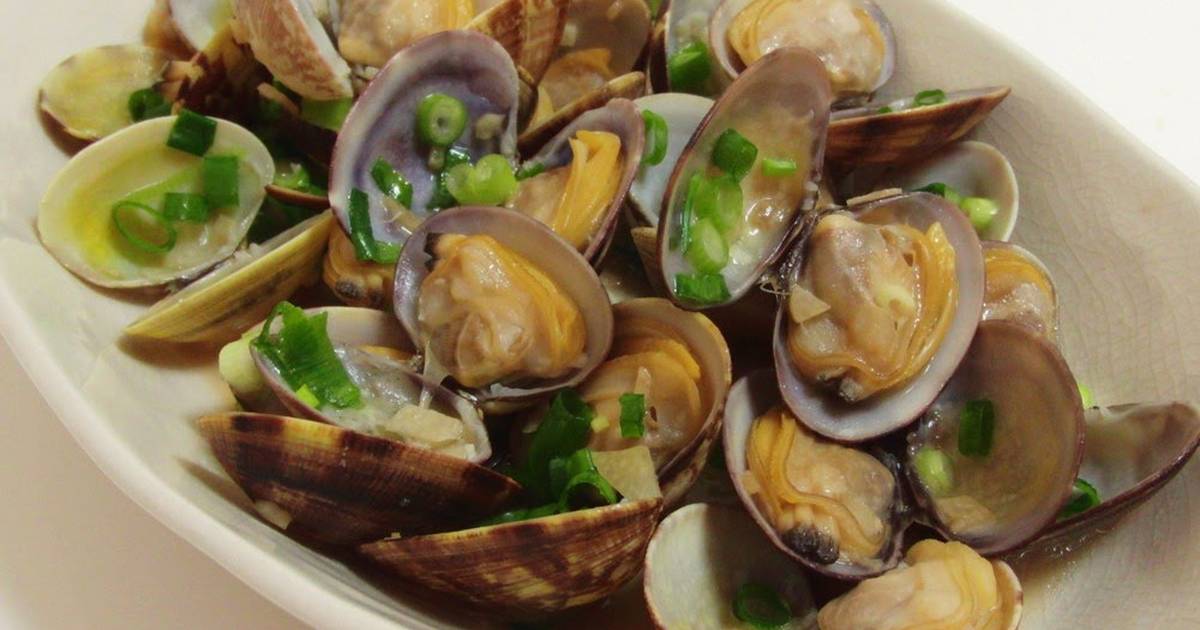The clam harvest figure in Kumamoto Prefecture didn’t add up to a ministry's survey, raising suspicions that clams from South Korean and Chinese waters were being passed off as locally caught.
Kumamoto Prefecture is renowned for producing some of Japan’s plumpest and tastiest “asari.”
Consequently, shipments of local “tennen-iki asari” clams harvested in local waters will be suspended for about two months, effective Feb. 8 while an investigation by the central government into false labeling is being sought.
During the suspension period, prefectural authorities will ask retailers to check the origin of clams sold as “produced in Kumamoto.”
Kumamoto Governor Ikuo Kabashima emphasized that there will be no future for the Kumamoto brand unless falsification issues are rooted out immediately.
He added that the Kumamoto federation of fisheries cooperative associations will cooperate in the prefectural government’s efforts.
A Ministry of Agriculture, Forestry and Fisheries survey on sales of fresh clams at supermarkets nationwide released Feb. 1 revealed that the volume of clams on offer as “produced in Kumamoto” far exceeded the annual haul in Kumamoto Prefecture.
From October to December last year, the ministry targeted around 1,000 supermarkets that operate in multiple prefectures, including Tokyo, for investigation on suspicions of false labeling of fresh clams.
Based on the findings, 3,111 tons, or 99.1 percent, of 3,138 tons of clams sold during the period were sold as “domestically produced,” with 2,485 tons, or 79.2 percent, being labeled as coming from Kumamoto Prefecture.
But the annual tonnage of clams in 2020 harvested in Japan as a whole came to 4,400 tons, of which clams produced in Kumamoto Prefecture came to a mere 21 tons.
About 35,000 tons of clams were imported from China and South Korea that year.
The findings prompted the ministry to purchase 31 packages of clams labeled as produced in Kumamoto Prefecture for DNA testing.
It discovered that all but one of the packages contained clams originating from China or South Korea.
The ministry also vowed to investigate distribution routes through on-site inspections of wholesalers to determine if laws were broken.
The ministry notified supply chain organizations such as supermarkets and fishery wholesale companies to thoroughly check the origin of their purchases.



 Federal Judge Upholds Trump Administration’s $100,000 H-1B Visa Fee
Federal Judge Upholds Trump Administration’s $100,000 H-1B Visa Fee  Najib Razak Awaits Court Rulings in 1MDB Case as Malaysia’s Anti-Graft Drive Faces Test
Najib Razak Awaits Court Rulings in 1MDB Case as Malaysia’s Anti-Graft Drive Faces Test  South Korea Exports Hit Record High as Global Trade Momentum Builds
South Korea Exports Hit Record High as Global Trade Momentum Builds  Federal Judge Declines to Immediately Halt Trump’s $300 Million White House Ballroom Project
Federal Judge Declines to Immediately Halt Trump’s $300 Million White House Ballroom Project  China Imposes 55% Tariff on Beef Imports Above Quota to Protect Domestic Industry
China Imposes 55% Tariff on Beef Imports Above Quota to Protect Domestic Industry  Epstein Files Released by DOJ Spotlight Bill Clinton, Raise Questions Over Trump Mentions
Epstein Files Released by DOJ Spotlight Bill Clinton, Raise Questions Over Trump Mentions  European Markets Mixed as Pound Weakens and Major Corporate Deals Emerge
European Markets Mixed as Pound Weakens and Major Corporate Deals Emerge  DOJ Releases New Epstein Files Detailing Alleged Trump Flights on Private Jet
DOJ Releases New Epstein Files Detailing Alleged Trump Flights on Private Jet  Oil Prices Rise as Ukraine Peace Talks and Middle East Tensions Stir Supply Concerns
Oil Prices Rise as Ukraine Peace Talks and Middle East Tensions Stir Supply Concerns  John Carreyrou Sues Major AI Firms Over Alleged Copyrighted Book Use in AI Training
John Carreyrou Sues Major AI Firms Over Alleged Copyrighted Book Use in AI Training  Gold Prices Ease After Record Highs as Dollar Firms, Broader Bullish Outlook Intact
Gold Prices Ease After Record Highs as Dollar Firms, Broader Bullish Outlook Intact  Trump Delays Tariff Increases on Furniture and Cabinets for One More Year
Trump Delays Tariff Increases on Furniture and Cabinets for One More Year  Trump Administration Probes Corporate DEI Programs, Raising Questions for Google Stock
Trump Administration Probes Corporate DEI Programs, Raising Questions for Google Stock  Texas App Store Age Verification Law Blocked by Federal Judge in First Amendment Ruling
Texas App Store Age Verification Law Blocked by Federal Judge in First Amendment Ruling  Democratic Attorneys General Sue Trump Administration Over Proposed Limits on Gender-Affirming Care for Youth
Democratic Attorneys General Sue Trump Administration Over Proposed Limits on Gender-Affirming Care for Youth  California Drops Lawsuit Over Federal Funding Cuts to High-Speed Rail Project
California Drops Lawsuit Over Federal Funding Cuts to High-Speed Rail Project 































